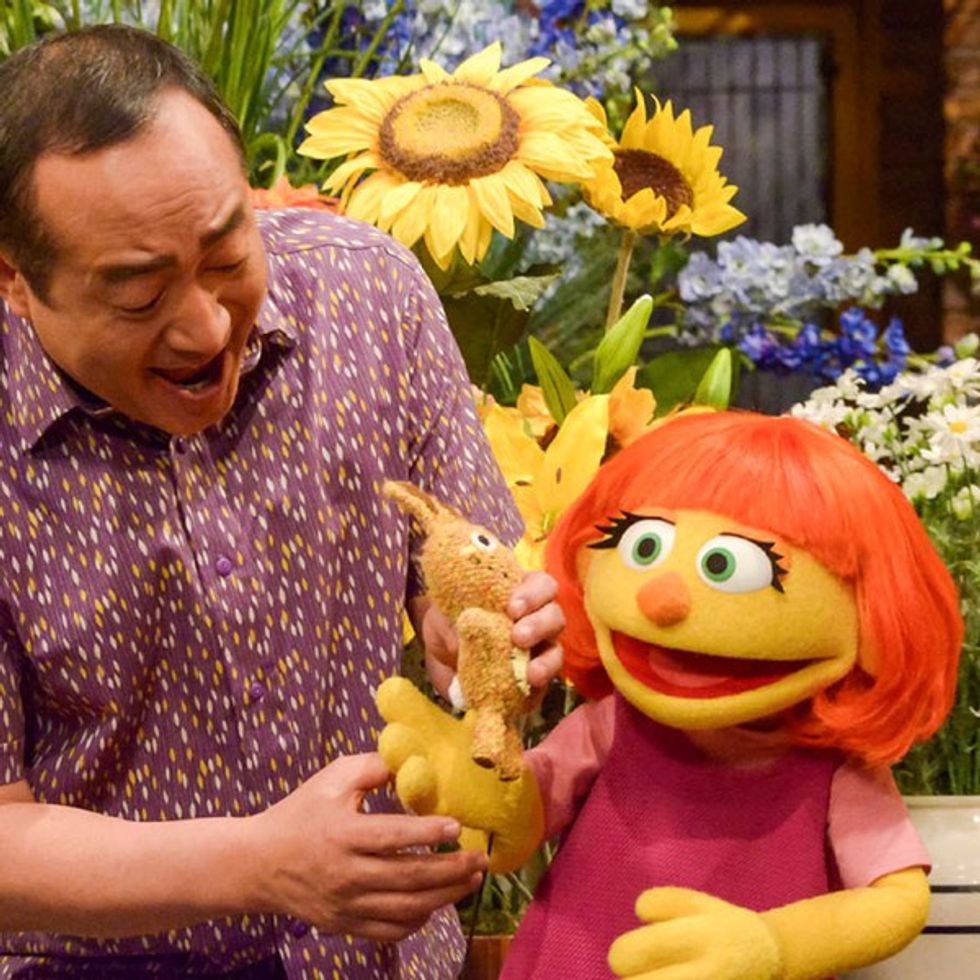One of the most popular streets in television just got a little more crowded. This week, on April 10th, Sesame Street debuted it’s newest muppet, named Julia. The newest character has a four-year-old girl with a bright yellow face and fiery orange hair, and she also is autistic. That’s right, Sesame Street has unveiled their first autistic character.
This is an incredible feat, as in the forty-six seasons previous to this one there has never been a character with a condition that affects one in sixty-eight children. While young children who watch the show might not pick up on her condition, it is important for adults to see that the show has debuted a character that they might relate to in their own lives.
In her television debut, Julia explains that even though she communicates differently from other characters, she can still be their friend and do all the same things. Big Bird is the first character to be confused by Julia, as he did not understand why Julia did not immediately respond to his interest in her finger-painting. The host of the show, Alan Muraoka, explains to Big Bird that Julia has autism, and lets the viewers of the show also know what Julia’s condition is.
Sesame Street hit the nail on the head with the creation of Julia. For about five years, Sesame Workshop looked into the unveiling of an autistic character and consulted at least fourteen organizations to really get the character right. They consulted people who have autism, as well as their families, to truly encompass the daily life of an autistic child.
The debut of Julia should teach us all that anyone who has autism should not be treated any differently and that they don’t need to be fixed. The Muppets do a good job in making sure that Julia is treated the same way, even if “she does things just a little differently, in a Julia sort of way,” says Abby Cadabby. If there’s anything to take away here, it’s that people with autism are just like us and should not be treated any differently.





 mr and mrs potato head
StableDiffusion
mr and mrs potato head
StableDiffusion










